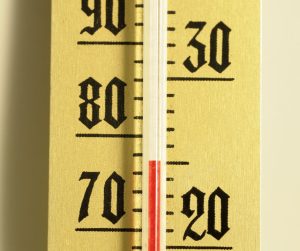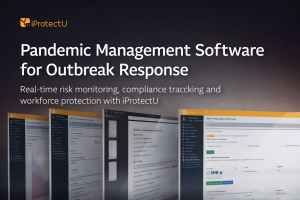Carbon Monoxide Poisoning
Carbon monoxide (CO) is a colourless, odourless, and poisonous gas produced by incomplete combustion of fuels. Inadequate ventilation or malfunctioning HVAC systems can lead to the accumulation of CO, which can cause serious health problems, including headaches, dizziness, nausea, and even death. Control measures include ensuring proper ventilation for HVAC systems to prevent CO buildup and installing CO detectors in areas where HVAC systems operate. CO detectors should be maintained. The good news is that cutting-edge gas detection systems are now available, offering a holistic and real-time solution.
Refrigerant Leaks
Refrigerants are essential for cooling and heating HVAC systems. However, some refrigerants, particularly the newer A2L refrigerants, are flammable and can pose a fire hazard if leaked. Leaks can also release refrigerant into the atmosphere, contributing to ozone depletion and global warming. Control measures include regularly inspecting HVAC systems for signs of refrigerant leaks, such as oil stains or low refrigerant pressure readings. Use refrigerant recovery equipment to safely recapture and dispose of leaked refrigerant. It is vital to implement leak detection systems to alert personnel of refrigerant leaks.
Electrical Hazards
HVAC systems commonly contain electrical components that can pose a shock hazard if not suitably grounded or maintained. Additionally, malfunctioning electrical components can cause fires or other electrical hazards. Control measures include ensuring all electrical components are properly grounded and in good working condition and regularly inspecting electrical wiring and connections for damage. Only qualified personnel should service or repair electrical components.
Mechanical Hazards
HVAC systems have rotating fan blades, compressors, and other moving parts that can cause injuries if mishandled. Additionally, high-pressure refrigerant lines can pose a puncture hazard. Control measures include disconnecting the power to HVAC systems before servicing or repairing. Proper lockout/tagout procedures should be followed to prevent accidental energization. It is important to wear appropriate personal protective equipment (PPE), such as gloves, goggles, and hearing protection.
Extreme Temperatures
HVAC systems can generate high temperatures, particularly in boilers and furnaces. Contact with hot surfaces can cause burns. Also, exposure to cold temperatures in condenser coils or refrigerant lines can lead to frostbite. Control measures include using caution when working around hot or cold HVAC components and wearing appropriate PPE, such as gloves and protective clothing. Employers should provide employees with training on the hazards of extreme temperatures.

Noise
HVAC systems may generate noise, which can disrupt work and cause hearing damage. Control measures include installing mufflers or silencers on HVAC components to reduce noise levels. HVAC systems should be located away from workspaces or employee areas. Employers should provide employees with hearing protection if noise levels are excessive.
Fire Hazards
HVAC systems can contribute to fire hazards if improperly installed or maintained. Electrical components, refrigerant leaks, and combustible materials can all pose fire risks. Control measures include ensuring proper installation and maintenance of HVAC systems. Fire prevention measures, such as smoke detectors and fire extinguishers, should be implemented. Employers should provide employees with training on fire safety procedures.
Contaminants
HVAC systems can circulate air throughout a building, potentially spreading dust, dirt, pollen, mould, and other airborne contaminants, which can trigger respiratory problems, allergies, and other health issues. Control measures include regularly cleaning and maintaining HVAC filters to remove airborne contaminants. It is important to implement air filtration systems to improve indoor air quality. Employers should provide employees with training on the health risks of exposure to contaminants.








